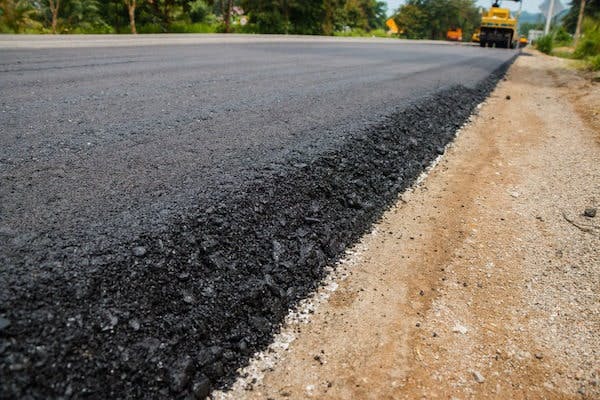Improve Building Worth and Capability with Hot Mix Asphalt Paving Providers
Improve Building Worth and Capability with Hot Mix Asphalt Paving Providers
Blog Article
Unlocking the Tricks of Warm Mix Asphalt Modern Technology
Exploring the midsts of warm mix asphalt technology uncovers a globe where accurate formulations and thorough procedures assemble to form our roadways and infrastructure. The blend of accumulations, fillers, and binders isn't merely a building and construction task yet a calculated orchestration of resilience and performance.
Relevance of Hot Mix Asphalt
Warm Mix Asphalt plays an important duty in contemporary infrastructure advancement due to its longevity and cost-effectiveness. As one of the most frequently used leading material for roads, freeways, and parking area, Hot Mix Asphalt supplies a series of advantages that add to its relevance in building and construction projects. One vital advantage is its ability to endure rush hour tons and harsh climate condition, giving a lasting and reputable surface for transport networks. In Addition, Warm Mix Asphalt is affordable in both preliminary construction and long-lasting upkeep, making it a recommended selection for numerous infrastructure jobs.
The durability of Hot Mix Asphalt stems from its structure, which consists of accumulations, binder, and filler products that are very carefully picked and mixed to satisfy specific efficiency demands. This specific combination results in a strong and adaptable sidewalk that can endure frequent use without considerable wear and tear. Warm Mix Asphalt is 100% recyclable, further enhancing its sustainability and environmental benefits. Generally, the relevance of Hot Mix Asphalt in facilities development can not be underrated, as it continues to be a keystone of modern construction techniques.
Components of Asphalt Mixes
The composition of asphalt blends consists of meticulously selected aggregates, binder, and filler materials that are critical for achieving specific efficiency requirements. Aggregates are the main element of asphalt blends, giving strength and stability. The binder, normally asphalt or asphalt cement, holds the accumulations with each other and gives flexibility and sturdiness to the mix.
The mix and percentage of these parts play a substantial duty in determining the high quality and efficiency of the asphalt mix. Designers meticulously make the mix to fulfill specific requirements, considering factors like traffic volume, climate conditions, and pavement lifespan. Proper option and harmonizing of accumulations, binder, and fillers are crucial for developing sturdy, durable asphalt pavements.
Mixing and Production Techniques

As soon as the accumulations are selected, the binder, frequently asphalt cement, is added to bind the materials together. The binder's high quality and quantity substantially affect the mix's versatility, resistance, and toughness to environmental elements. Furthermore, fillers like hydrated lime or Portland concrete might be included to boost details features of the asphalt mix, such as its workability or dampness resistance.
During manufacturing, the aggregates and binder are heated, generally between 250-325 ° F(121-163 ° C ), to facilitate blending and make certain correct finish of the aggregates. The mixing procedure has to be detailed to attain an uniform mix that promotes the desired performance features of the asphalt. Numerous methods, such as batch blending or drum mixing, are employed to attain top notch and constant asphalt mixes for building and construction jobs.
Elements Affecting Asphalt Efficiency
Elements affecting asphalt performance encompass a variety of variables that impact the longevity, durability, and general high quality of asphalt link sidewalks. One essential factor is the high quality of materials made use of in the asphalt mix. The type and resource of aggregates, the binder high quality, and the ingredients all play a substantial function in determining the performance of the asphalt sidewalk. The rank of accumulations is crucial as it influences the mix's workability, security, and resistance to rutting and cracking.

Environmental conditions additionally affect asphalt performance. Temperature level variants, dampness infiltration, and traffic loads can all influence the structural integrity of the sidewalk. Design factors to consider, such as pavement thickness and drainage, are essential in ensuring the long-term efficiency of the asphalt pavement. By carefully considering these elements, engineers and contractors can optimize asphalt efficiency and boost the life span of pavements.
Lasting Practices in Asphalt Modern Technology

WMA enables for the manufacturing and placement of asphalt mixes at lower temperatures contrasted to typical hot-mix asphalt, resulting in lowered power usage and greenhouse gas emissions. The usage of porous asphalt blends can aid alleviate stormwater drainage concerns by allowing water to penetrate with the pavement and right into the ground, advertising natural water filtration and reenergize processes.
Verdict
In verdict, warm mix asphalt modern technology plays a crucial duty in contemporary facilities advancement due to its longevity and cost-effectiveness. By thoroughly stabilizing parts, utilizing correct mixing methods, and thinking about different factors, designers can produce premium asphalt blends that stand up to heavy web traffic tons and severe climate condition. Welcoming sustainable methods, such as making use of recycled find out this here products and warm-mix modern technologies, even more boosts the environmental kindness of asphalt technology.
Mixing and manufacturing methods in hot mix asphalt technology include the specific mix and handling of aggregates, binder, and fillers to create a long lasting and high-performance asphalt mix.Aspects influencing asphalt performance incorporate a my review here range of variables that impact the sturdiness, durability, and total quality of asphalt pavements. Sustainable methods in asphalt technology incorporate numerous initiatives aimed at reducing the environmental impact of asphalt production and paving processes. By incorporating recovered asphalt pavement (RAP) and recycled asphalt roof shingles (RAS) right into brand-new asphalt blends, the industry can substantially lower the usage of raw materials and energy, while additionally lowering land fill waste.
WMA enables for the manufacturing and placement of asphalt blends at reduced temperatures contrasted to typical hot-mix asphalt, resulting in decreased power usage and greenhouse gas emissions.
Report this page